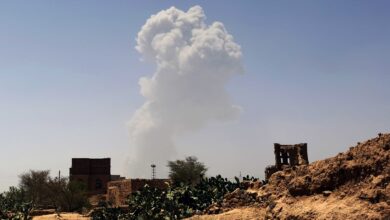
After yet another incident in a long series of fuel spills and contamination of local water supplies in Hawaii, the Department of Defense ordered the permanent closure of the Red Hill bulk fuel storage facility in March 2022.
The loss of this facility increased the US Navy’s challenge to fuel the fleet in the event of a conflict in the Indo-Pacific.
Conversely, a Brown University study exposed the risk of over-reliance on Russian oil and gas to US forces based and operating out of Europe. Before its Ukraine invasion, US forces received nearly 30 percent of its energy needs from Russian sources.
Beyond energy supply, the US military has been forced to reconcile with the after-effects of burn pits to dispose of waste used during the Iraq and Afghanistan wars.
Major combat operations require planning and attention to detail, which includes contracting energy needs and waste processing. When considering end-to-end requirements and logistical gaps, the widespread adoption of waste-to-energy systems would lessen the risks incurred.
Plasma gasification systems would supplement base energy needs while conserving fuel reserves for higher priority, combat-oriented needs. Furthermore, they would mitigate the health risks of current waste disposal methods.
Plasma Gasification
Achieving vaporization of materials through combustion, plasma gasification can process common household trash, biomedical waste, toxic and chemical waste, plastic, and even batteries or electronic components that cannot be broken down and recycled by other means.
The by-products of the gasification process can be cleaned to varying degrees, allowing some of the syngas to be used for energy or heat generation and the solid as aggregate in building materials in roadways and building foundations.
The technology is not foreign to the US military. The US Navy already operates a Plasma Arc Waste Destruction System onboard Ford-class aircraft carriers, and the US Air Force has run a plasma power plant since 2010 at Hurlburt Field, Florida. The Hurlburt facility is one of 75 waste-to-energy plants already in operation in the US, which pales in comparison to facilities utilized by other nations, including 400 in Europe.
Skyrocketing Costs
Taking advantage of plasma plants to support facility heating and electricity would reduce a portion of the estimated 1.5 million barrels of oil used yearly by US installations in Europe alone.
In March 2022, US installations in Europe saw increases between 40 and 97 percent in spending on facility electricity and natural gas due to Europe reducing reliance on cheaper Russian energy.
Plasma waste-to-energy solutions reduce costs and provide energy resilience, as called for in the energy policy for the Department of Defense. Beyond saving in costs, such efforts would also address goals and realize savings in waste processing.
Repurposing Waste
By repurposing waste developed by the installation for electricity and heating, the US government would also realize varying savings in waste processing and transportation costs. Diverting waste to waste-to-energy (WtE) facilities would reduce costs associated with municipal solid waste processing, a large portion of base operating costs.
This diversion would aid in progressing toward Department of Defense waste processing goals, including diverting more than 40 percent of non-construction and demolition waste away from landfills. Additionally, plasma gasification plants render most non-nuclear toxins and heavy metals inert, a safer alternative to toxic burn pits.
Permanent and portable WtE plants would reduce the required expenditure of fossil fuels to maintain operations at military installations, allowing for prioritization of fuel and resource expenditure on major combat operations.
As the US military explores potential applications of electric and hydrogen technologies, WtE plants would provide electricity and hydrogen, further bolstering the self-sufficiency and sustainability of forward-deployed units.

Win-Win
In planning for a potential conflict, strategists and acquisition professionals must consider the implicit requirements that accompany sustaining major combat operations. Tactical execution in support of operational and strategic goals will depend upon having the necessary logistical support, including electricity and fuel for installation and vehicular use.
Geopolitical circumstances and the wartime restructuring of alliances could complicate the sourcing of requirements. As shown by the closure of Red Hill, the storage and distribution of critical materials can also be inhibited, whether by purposeful decommissioning or adversarial strikes.
These are stark realities, given the globalized nature of supply chains and energy infrastructure and the finite nature of fossil fuel reserves.
In expanding the adoption of plasma gasification plants, the US military can mitigate the operational and financial risks posed by these challenging realities and increase the self-sufficiency and resilience of permanent and forward-deployed installations.
Mitigating risks around the sustainability of tactical forces increases the likelihood of achieving strategic objectives in the event of a large-scale modern conflict.
 Michael Knickerbocker (@saltystrategist) is a Surface Warfare Officer in the United States and has previously written about national security issues involving sustainment for The Hill, The National Interest, The Defense Post, and others.
Michael Knickerbocker (@saltystrategist) is a Surface Warfare Officer in the United States and has previously written about national security issues involving sustainment for The Hill, The National Interest, The Defense Post, and others.
The opinions reflected here are his own and do not represent the official policy of the Department of Defense or the Department of the Navy.
The views and opinions expressed here are those of the author and do not necessarily reflect the editorial position of The Defense Post.
The Defense Post aims to publish a wide range of high-quality opinion and analysis from a diverse array of people – do you want to send us yours? Click here to submit an op-ed.











